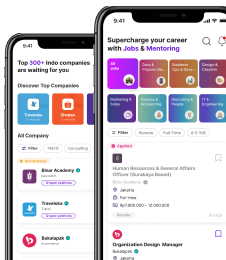MUN is modeled after the real United Nations, so everything, from the formal setting to the phrases used, makes you feel like you’re in an actual UN conference.
If it’s your first time joining a conference, take some time to familiarize yourself with common MUN phrases so you don’t feel completely out of the loop during sessions.
From “motion to,” “honorable chair,” “point of order,” and many more, these phrases help you sound professional.
Let’s get you familiar with them so you can speak like a real delegate!
General MUN Terms You Need to Know

First, you need to understand the common terms you’ll hear frequently when joining a conference. Here’s a list of all MUN terms you need to know:
- Advisor: Teacher or head-delegate supervising a school’s MUN team.
- Amendment: A proposed change or addition to a draft resolution.
- Caucus: Temporary pause in formal debate for informal discussion.
- Chairboard/DAIS: The team, including chair and directors, managing the committee.
- Delegation: The representatives of a country at a MUN conference.
- Directive: A crisis committee document to take immediate action.
- Motion: A formal proposal for committee action.
- Placard: A country nameplate raised to be recognized by the chair.
- Point: A procedural tool to ask questions or address rules.
- Quorum: Minimum delegates required to conduct committee business.
- Signatory: A delegate who wants a resolution debated but may not support it.
- Sponsor: A delegate who supports and contributed to a resolution.
- Working Paper: Informal document preceding a draft resolution.
Read More: How to Write a Winning MUN Position Paper + Sample (Complete Guide)
Phrases for Delegates
Bridging is key in MUN, and as a delegate, one essential tip is to avoid using emotional language. Instead, choose formal words such as “urge”, “encourage”, or “emphasize”.
Here are some common MUN phrases for delegates you should know:
1. Opening Speech
Remember these key MUN phrases when delivering your opening statement to help you sound professional and honorable.
Examples:
- “Distinguished Chair, honourable delegates…”
- “The delegation of [Country] believes that…”
- “Our nation recognizes the importance of…”
- “In conclusion, we urge the committee to take collective action.”
2. During Moderated Caucus
During a moderated caucus, delegates deliver short speeches to share opinions or respond to others. If you want to voice your thoughts, use these professional and diplomatic phrases.
Examples:
- “The delegate of [Country] would like to add that…”
- “We strongly encourage cooperation among member states…”
- “To clarify, our delegation supports the previous statement…”
- “Thank you, I yield the floor back to the Chair.”
3. Points
“Point” is a MUN delegate phrase used to raise questions or make comments during the session. Remember that all points must be directed to the Chairperson, not to other delegates.
a. Point of Personal Privilege
Used to address personal needs or discomforts.
Examples:
- “Point of personal privilege, I cannot hear the speaker.”
- “Point of personal privilege, could we adjust the room temperature?”
b. Point of Order
Used when you believe that parliamentary procedure is not being followed correctly.
Examples:
- “Point of order, the delegate exceeded their speaking time.”
- “Point of order, that motion is out of order according to the rules of procedure.”
c. Point of Information
Used to ask questions or seek clarification from the Chair or another delegate (if permitted).
Examples:
- “Point of information to the Chair, could you please repeat the topic of the motion?”
- “Point of information to the delegate of [Country], could you clarify your stance on this issue?”
4. Motions
If you want to make suggestions about how the session should proceed, you may raise a motion. In the Harvard procedure, there are 16 types of this MUN phrase:
Motion | Purpose |
Motion to adjourn the meeting | End the session officially. |
Motion to suspend the meeting | Take a short break. |
Motion to close debate | Move to voting. |
Motion to table the debate | Postpone discussion. |
Motion to resume debate | Continue a postponed topic. |
Motion for reconsideration | Reopen a previous discussion. |
Motion to reorder resolutions | Change the discussion order. |
Motion to divide the house | Revote when results are unclear. |
Motion to divide the question | Vote on parts separately. |
Motion to conduct a roll-call vote | Vote by calling each country. |
Motion to introduce a draft resolution | Present a new resolution. |
Motion to introduce an amendment | Propose changes to a resolution. |
Motion to question the competence | Challenge topic relevance. |
Motion to extend the caucus | Add more time to the caucus. |
Motion for an unmoderated caucus | Allow informal discussion. |
Motion for a moderated caucus | Hold structured debate. |
5. Yielding
Another common MUN phrase is yield, which refers to giving up your remaining speaking time, either to another delegate, to answer questions, or back to the Chair.
However, always check whether yielding is permitted under your committee’s procedure, as some conferences have specific rules for it.
Examples:
- “I yield my time to the Chair.” (ends your speech)
- “I yield my time to the delegate of [Country].” (gives your remaining time to another delegate)
- “I yield to points of information.” (allows other delegates to ask you questions)
At the end of a speech:
- “I yield the floor to the Chair.”
- “I yield the floor to the delegate of [Country].”
- (If requested by the Chair) “Floor yielded.”
6. Voting Procedure Phrases
Once amendments have been finalized, delegates move to the voting procedure. This stage can be complicated, so it’s important to clearly understand the common phrases used at each step.
- All those in favor / against / abstaining: Used when the Chair asks delegates to vote.
- Motion to vote by roll call: Requests each delegate’s vote to be called individually.
- Motion to reorder the draft resolutions: Changes the order in which resolutions are voted on.
- Motion to divide the question: Splits a draft resolution into parts (e.g., clause by clause) for voting.
- In favor / Against / Abstain: Shows a delegate’s position on a vote.
- Pass / Yes with rights / No with rights: Roll-call options to defer or participate with explanation.
- Resolution passes / fails: Chair announces the final vote result.
7. Resolutions
Once debate is underway, the ultimate goal of the committee is to pass a resolution. Even if you’re new to writing resolutions, it’s important to know the common terms used so you can follow discussions:
- Draft resolution: Formal document introduced to committee, becomes a resolution once passed.
- Pre-ambulatory clauses: Italicized/underlined statements describing the problem and past actions.
- Operative clauses: Numbered statements with proposed solutions.
- Friendly amendment: Approved by all sponsors, automatically included.
- Unfriendly amendment: Not approved by all sponsors and therefore requires a vote.
- Merging: Combining two or more draft resolutions.
- Voting bloc: Group of delegates voting together on resolutions or amendments.
Read More: What Is the GYDMUN? Become a Diplomat for a Weekend!
Phrases for Chair

If it’s your first time being a Chair, it’s essential to know the key MUN phrases for a Chair to better manage and direct the conference.
These phrases help you direct the committee, manage debates, and ensure that the conference runs smoothly.
1. Opening the Session
At the start of a MUN, the Chair sets the tone by guiding the committee through roll call and opening speeches. These steps officially begin the session and introduce delegates’ positions.
a. Roll Call
The Chair calls the committee to order and asks each delegate to respond with “present and voting.”
Example:
“The house will now come to order. We will begin with the roll call. Delegates, please raise your placards and respond ‘present and voting.’”
b. Opening Speeches
Delegates present their country’s positions, key issues, and priorities. Speeches are timed and structured.
Example:
“We will now proceed with opening speeches. Delegates will be called in groups of 3, with 1 minute each.”
Reminder phrase:
“Please use third-person pronouns and refrain from personal pronouns.”
2. During Debate
Once the session has opened, the Chair manages the flow of debate, handling motions and keeping the discussion organized. Here are some MUN phrases you can use:
a. Opening Debate / Motions
The Chair oversees procedural motions and requests to speak.
Example:
- “Are there any points or motions on the floor?”
- “This motion is in order. Are there any seconds?”
- “Thank you, are there any objections?”
- “All those in favor of this motion to open debate, please raise your placards now.”
- “All those against, please raise your placards now.”
- “This motion passes/fails.”
b. General Speaker List
A running list of delegates who wish to speak, ensuring everyone has a chance to contribute.
Example:
- “Delegates who want to be included in the general speaker list, please raise your placards.”
- “Not every delegate on the list will speak, we will rotate through the list at regular intervals.”
3. Setting the Agenda (Caucuses)
Once the opening debate begins, the Chair helps delegates organize discussion topics and manage both moderated and unmoderated caucuses.
a. Setting the Agenda
The Chair guides delegates in choosing the order of topics for debate.
Example:
- “All those wishing to be added to the primary speakers’ list, please raise your placards now.”
- “Seeing that the primary speaker list has been exhausted, we will move to voting on the agenda. All those in favor, please raise your placards.”
b. Moderated Caucus
A structured discussion with timed speeches, controlled by the Chair.
Example:
- “This motion is in order. Are there any seconds?”
- “Delegate of X, would you like to speak first or last in this moderated caucus?”
- “Delegates, please keep your speeches within the allotted time.”
c. Unmoderated Caucus
An informal discussion where delegates can move freely, negotiate, and prepare draft resolutions.
Example:
- “The motion has passed. We are now in an unmoderated caucus for 20 minutes. Delegates may leave their seats to discuss, but please do not leave the room.”
- “Time has elapsed. Delegates, please return to your seats.”
4. Resolution & Amendments
After caucuses, delegates focus on drafting resolutions and refining them through amendments. The Chair may use these MUN phrases to ensure proper procedure.
a. Working on Draft Resolutions
Delegates collaborate to write formal proposals that outline solutions.
Example:
- “Delegates, please submit your draft resolutions to the Chair for review.”
- “This draft resolution has been approved and may now be introduced to the committee.”
b. Friendly/Unfriendly Amendments
Changes to operative clauses of a draft resolution. Friendly amendments are approved by all sponsors, while unfriendly amendments require debate and a vote.
Example:
- “We have received a friendly amendment from the delegate of X. Are all sponsors in favor?”
- “This unfriendly amendment will now be debated. Delegates wishing to speak in favor, please raise your placards.”
c. Merging Draft Resolutions
Combining two or more draft resolutions into a single document.
Example:
- “Delegates X and Y have motioned to merge their draft resolutions. Are there any seconds?”
- “This motion to merge passes/fails. If passed, the new combined draft resolution will be introduced.”
5. Voting and Announcing Results
Lastly, once resolutions and amendments are finalized, the committee moves to voting. The Chair guides delegates through the process and announces the outcome.
a. Voting on Resolutions (Amendments)
Delegates indicate their position using placards or other approved methods.
Example:
- “All those in favor of this resolution, please raise your placards now.”
- “All those against, please raise your placards now.”
- “All those wishing to abstain, please raise your placards now.”
b. Roll-call Voting
Each delegate’s vote is recorded individually, often used for important or close decisions.
Example:
- “Delegate of X, how do you vote?”
- “Delegate of Y, please state your vote.”
c. Announcing Results
The Chair declares the outcome once all votes are counted.
Example:
- “The results of the vote are as follows: … in favor, … against, … abstentions.”
- “With … in favor, … against, and … abstentions, this resolution has passed/failed.”
Want to Put Your Debate Skills to the Test? Join GYDMUN 2026 in Malaysia!
If you want to experience a true conference modeled after the real United Nations, join GYDMUN 2026 in Malaysia!

GYDMUN is a prestigious MUN in Asia, where 500+ young delegates from around the world will come together for a 4-day, 3-night immersive experience.
If this is your first time joining an MUN, don’t worry—GYDMUN is designed to be beginner-friendly.
Even if you’ve never joined a conference before, you’ll get all the guidance you need to feel confident and prepared.
You’ll be fully supported with hotel, meals, 24/7 liaison assistance, a starter kit, and even a city tour, so you can focus on experiencing life as a delegate.
The conference is open to ages 11–26, with opportunities to participate in councils such as UNCHR, ILO, and WHO.
Register now or learn more about GYDMUN before all slots are fully booked!
- Guidebook: GYDMUN Guidebook
- Video Trailer: GYDMUN 2026
- Official Website: gydmun.org

Source:
The Phrases That You Can Use In Mun (For Delegates) | MUN Turkey
Useful Expression Mun | English with Mrs. Traumat
Vocabulary for Model UN Delegates and First-Timers (Mun Vocab Series) | Diplomacy MUN
